It’s all about the math. Some like more, some like less—more power, less weight. How about more suspension, more durability, more track, more track speed, more paddles, less trenching, less effort, less cost and less weight? Sometimes you can’t have both more and less. You have to decide your priorities according to your riding style.
During the 2021 SnoWest Deep Powder Challenge, the one thing that did add up was the awesome power delivered by the Ski-Doo Summit X Turbo that caused our test riders to take note.
Some may question the fairness of a turbo competing with naturally aspirated snowmobiles. Well, if your snowmobile comes stock from the factory with a turbo, it’s still a stock sled. And there’s no question that it was the best snowmobile on the mountain during our deep snow event.
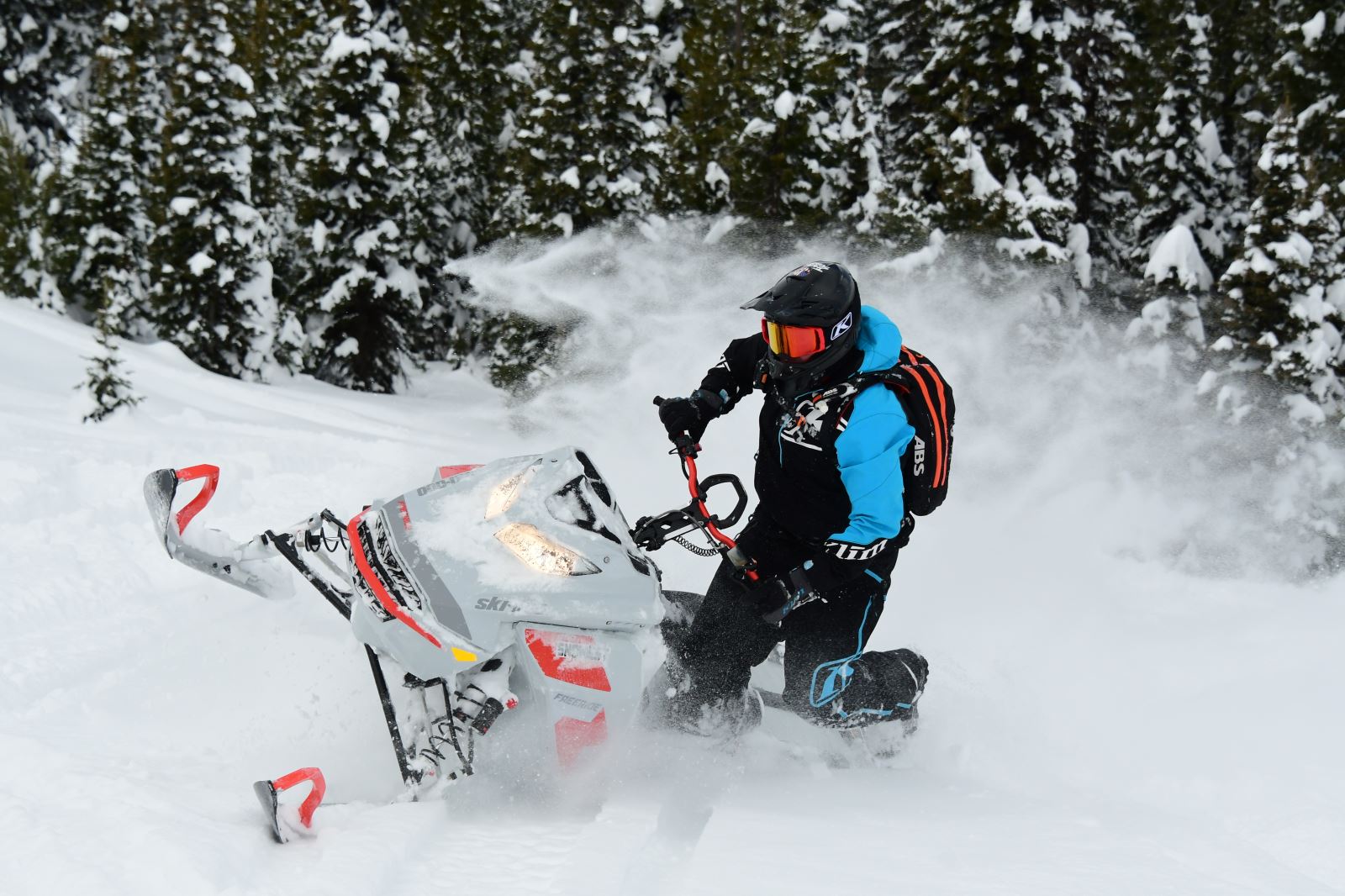
The most common response from the test riders when bouncing from sled to sled was: “Wow. I knew it would have more power. But I had no idea it would have that much more power and would be that easy to ride.”
We actually tried to break our tests down into two groups of snowmobiles—165s and 154/155s. We had the following sleds available to test: Ski-Doo Summit X Turbo 165, Polaris Khaos 165, Arctic Cat Mountain Cat Alpha One, Arctic Cat Hardcore 154, Yamaha Mountain Max 154, Polaris Khaos 155 and Ski-Doo Freeride 154.
Although there are other models of mountain sleds, these sleds represented a cross section of what we think are the best features from the four manufacturers.
As you read through this article and the sidebars with charts, photos and quotes, you will see a lot of subjectivity in sorting through the information. That’s always the most challenging aspect of any head-to-head snowmobile comparisons. Part of the reason we offer so much variety in our information is to allow you to sort through and pick out what’s more important to your riding preference. Sometimes power isn’t as big a factor as handling, weight or price.
Although brand familiarity will always play a factor for our test riders when it comes to handling and sidehilling, sometimes spending more time on a snowmobile they’re not familiar with opens their eyes to things they’ve been missing.
First Impressions
Obviously, the endless power of the Summit Turbo stood out in the deep snow just southwest of Two Top in Island Park, ID. Snow conditions created the type of challenge that would push most sleds to their limits.
We picked a great day for testing. A recent snowstorm had dumped a couple feet of dry powder. There really wasn’t much of a base below the fresh snow, so even though the weekend warriors tracked up all the new snow on the flat and open terrain, hardly any ventured out into the trees where the going was really tough (occasionally we would see the craters left by those who ventured off the beaten path … they really looked like war zones with multiple stuck holes located within feet of each other and deep enough to bury armies). The snow had received a couple days of sunlight which left a slight crust on the top layer that was very conducive to trenching.
In these conditions, you have to have a snowmobile that’s easy to throw on line, light enough to stay high in the snow, an aggressive track to keep forward thrust, and enough power to generate track speed to maintain forward momentum—and all of this without hitting trees.
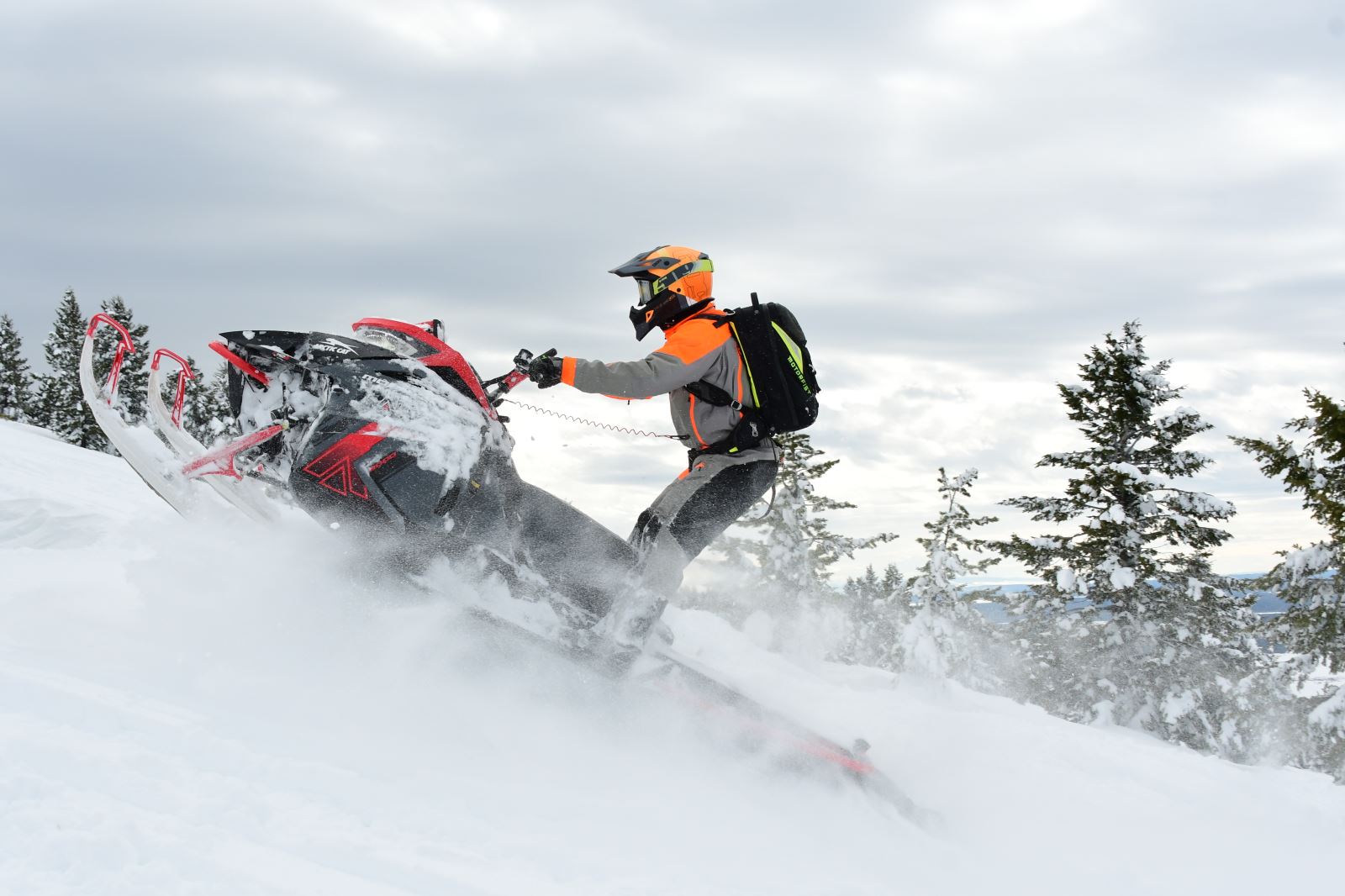
With the expert riders, all the snowmobiles carved through the trees and clawed their way up the slopes. However, with the power of the Summit X Turbo, there was never any question as to whether you could make a climb.
Both Ski-Doos, the Turbo and the Freeride, showed a little more bottom end power. The Polaris Khaos sleds were perhaps the weakest on the bottom (that could be due to track lug size—2.75 inches). Although the Cat engine delivered a lot of power, it seemed to be the first to run out of power on the top end. All the sleds were very comparable on the midrange (if you exclude the Turbo).
One thing that made the Turbo impressive was that it didn’t get in its own way at low speeds. You’re not having it try to spool up and generate boost. It rides just like any other stocker with smooth bottom-end grunt. The explosive power is only there when you ask for it. And even then it comes in smooth and controllable.
Making The Turn
When it comes to counter-steering, the Arctic Cat and Yamaha (with the single-beam rear skid) were extremely easy to engage and control. As for that dreaded right hand sidehill/turn, the Alpha One suspension engages instantly on the counter-steer and will tip the snowmobile into the slope with very little effort.
As for the Khaos, this sled was always true to its line. The consensus of the test riders was that with Polaris you could set your edge and the snowmobile would maintain it, even when cutting through the ruts and trenches left from other snowmobiles. Cat and Yamaha also proved to be predictable in holding a line. Polaris, Cat and Yamaha seemed to have similar balance points and predictability during a sidehill.
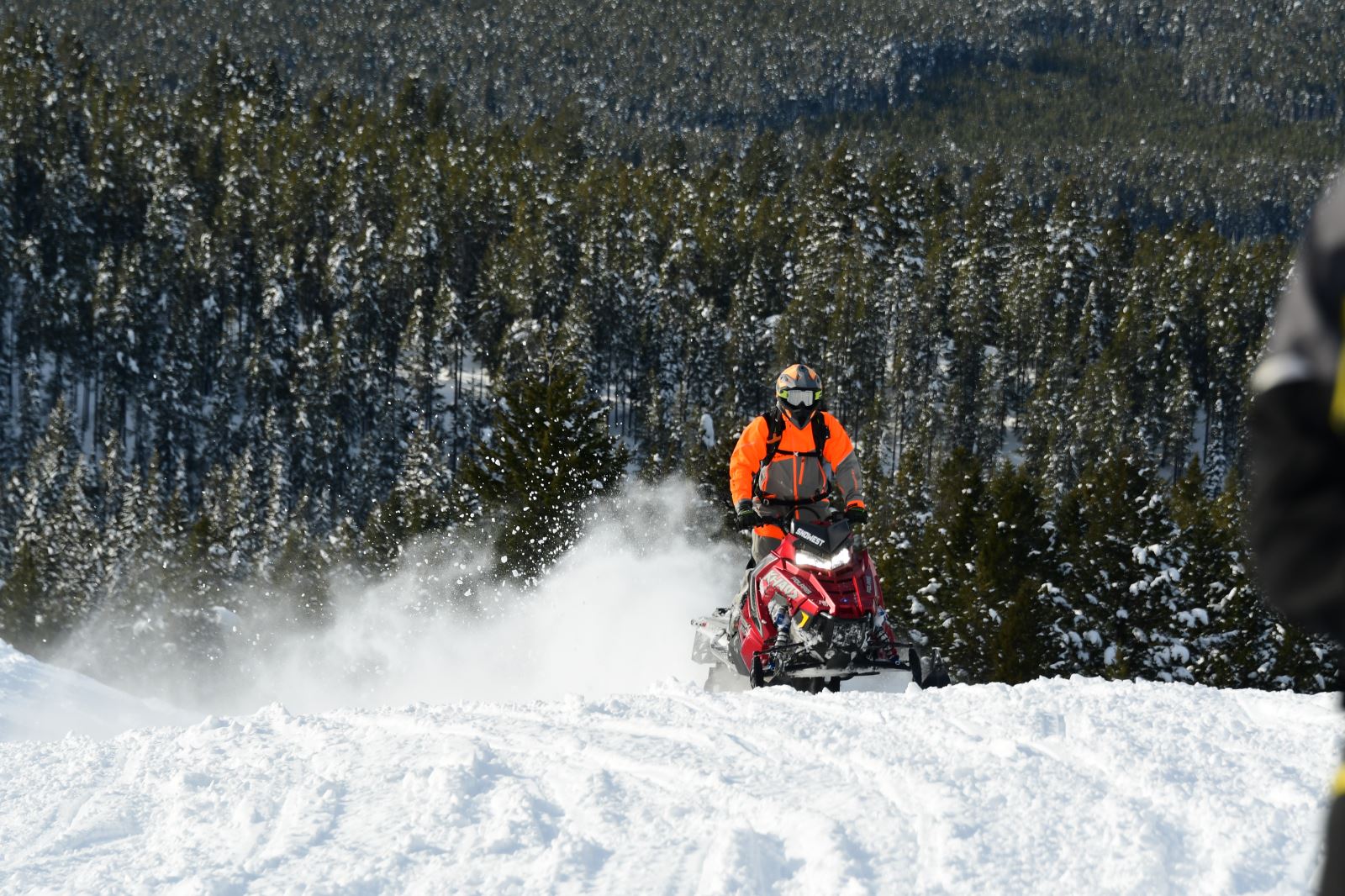
With the Ski-Doos, the riders who don’t have a lot of seat time on the Rev Gen4 chassis were constantly correcting their line. Often the uphill ski would pop out of the snow and try to level out with the other ski. This would cause the sled to either drift uphill or dive downhill. So foot placement on all the sleds generated a lot of the nuances in handling. Just an inch forward or backward could change the balance plane of the sled. However, even those riders who spend a lot of time riding Ski-Doo have accepted that the snowmobile is going to be light on the front and require a little extra work to maintain its line.
Maintaining Balance
Another issue that separates the mountain sleds is with front-end balance. Although you want the nose to lift up out of the snow, you don’t want the sled coming up too high for you. This was a constant struggle with the Ski-Doos. We were constantly burping the throttle or tapping the brake to keep the front end level.
However, when running through trees, it is much easier to stay neutral (feet on each side of the running boards) and travel at slower speeds for control on the Ski-Doos.
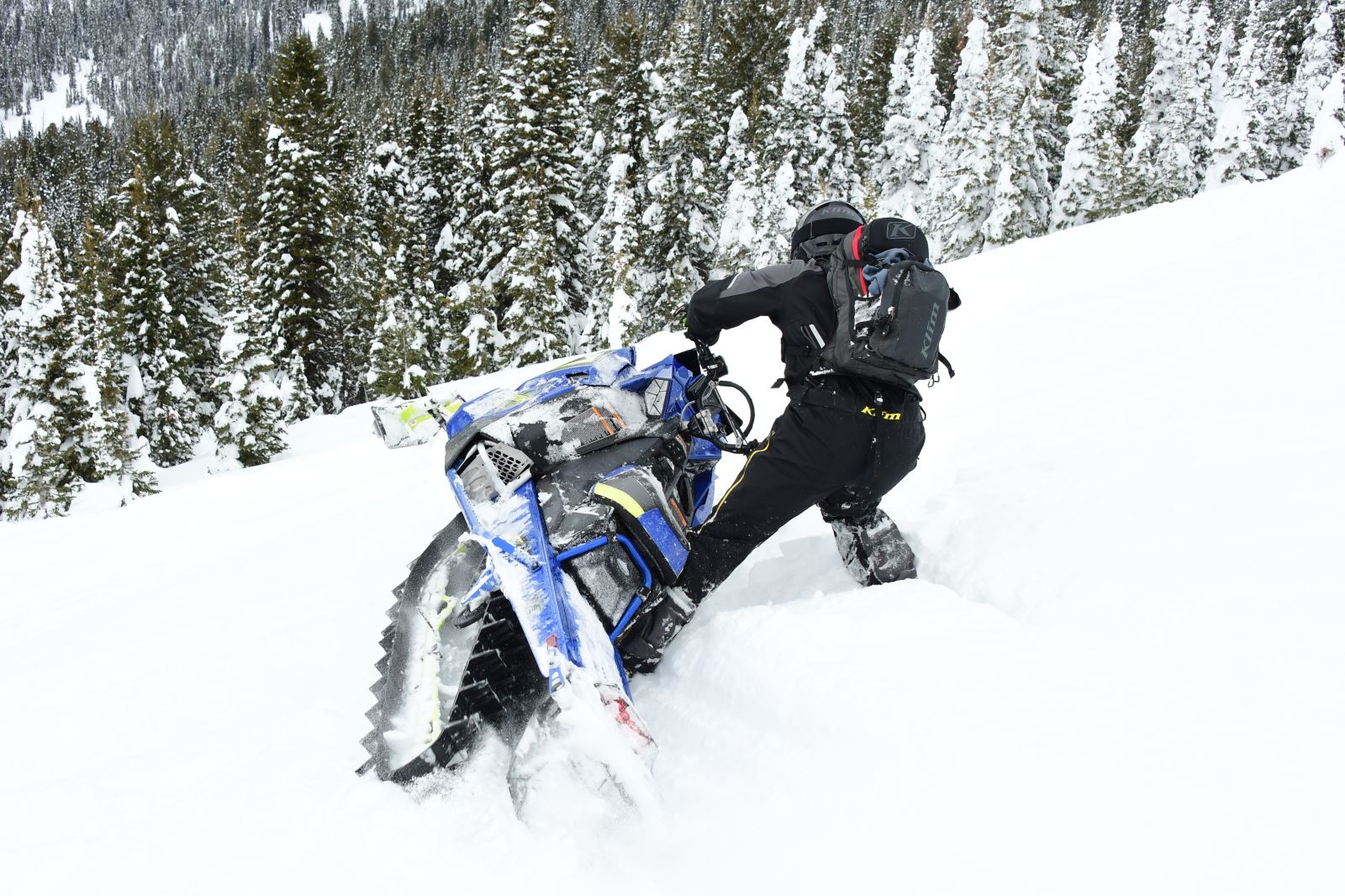
For the Alpha One sleds, there tends to be a balance point where you’re on the throttle and the front end lifts up and planes smoothly, or you let off the throttle and the nose dives and you feel a lot of front-end weight.
With Polaris, the big difference between the Pro RMK and the Khaos is how the two pivot in the snow. The Pro stays level. Polaris designed the Khaos to be a little more playful to allow the front end to come up higher. The result is you have a snowmobile that stays relatively level but with a playful front end. (That’s one of the reasons we chose the Khaos over the Pro for the Deep Powder Challenge.)
Also, the 165-inch tracks showed much better flotation … although the test riders found that the 154/155 length tracks proved to be much more playful and quicker to respond in the turns.
Hooking Up
When it comes to forward thrust, all of the long tracks tend to do a great job. However, when it comes to track length and lug depth, our test riders were all over the board on their likes and dislikes. For some, the longest and deepest were always the bestest. Others felt the 154/155s provided better track speed, were much more playful and could still go through the deep snow. There also were disagreements on the lug depth. Some felt the shorter lugs trenched less and thus kept the snowmobile more level in the snow.
The 3-inch Power Claw track hooked up hard and worked great in most snow conditions. It tended to thrust hard forward and allow the snowmobile to get on top of the snow a little easier. The 2.6-inch Power Claw seemed to trench a little too much in the powder. But it worked great on packed snow.
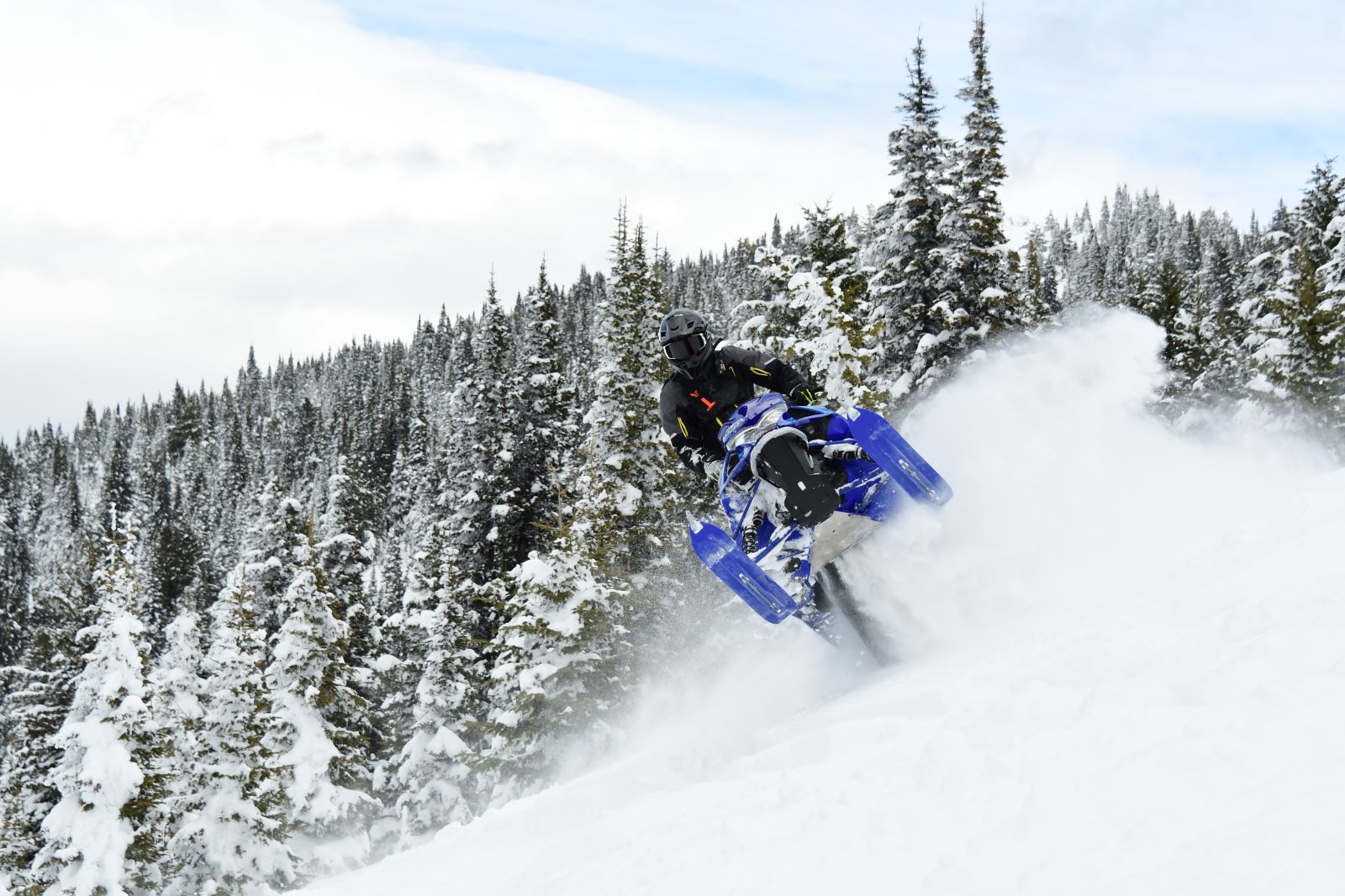
Keep in mind, on the Alpha One skid, the Power Claw track molds to the contour of the terrain. So it will hook up harder since it has a more secure footprint. But it does have a tendency to push forward … not to where your skis are pointed but in the direction the track is pointed.
Although Polaris has gone to a 2.75-inch lug on its Series 8 tracks, you don’t see much loss of forward thrust. In fact, this track tends to trench less and climb up on top of the snow a little quicker.
Comfort & Ride
Both the Hardcore and Mountain Max had a great feel on the trail. The two things we picked up on were that their seats were much softer and their ride was slightly higher. When you went into corners these sleds stayed flat and cornered better than the competition.
Both Polaris and Ski-Doo have fairly stiff seats and tend to show a slight chassis roll when going through turns.
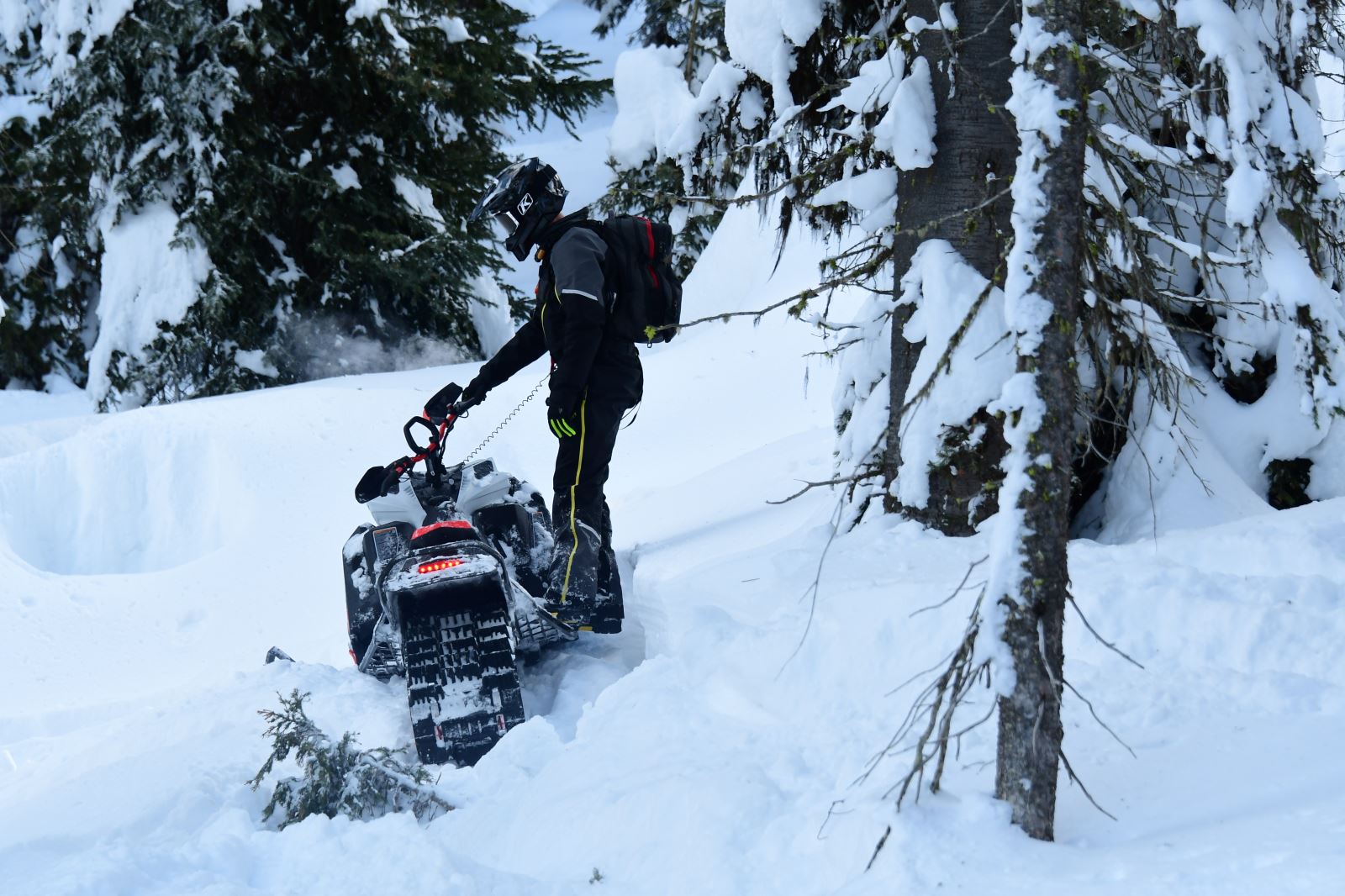
Of our four shorter track sleds, only the Khaos was a pull start. Cat and Yamaha had electric start (which is part of the reason they were also about 80 pounds heavier than the Khaos). The Freeride comes with SHOT, which means you only pull the rope at the beginning of the day and the button for the rest of the ride.
Cat and Yamaha also offered the most user-friendly access to the gauge controls and hand warmers. The gauge is easy to read but takes some time to learn how to adjust and toggle through the information. The little pouch between the handlebars and gauge is perfect for a pair of goggles or gloves. The engine heat kept things warm and de-fogged.
Adding Thing Up
Here are just a few more observations we noted on the sleds:
- Ski-Doo, Yamaha and Arctic Cat have reverse beeper. On the Polaris you have to wait for the gauge to re-start and then look for a blinking light.
- The mono-beam suspension cleans out better than the other two models. This means you aren’t packing nearly as much snow in your suspension as you do on Polaris and Ski-Doo (this helps compensate for the weight disparity).
- We found the Khaos 155 had a tighter turning radius. Both in a slow circle and a hard counter-steer turn, it was 4.5 feet tighter than the Freeride and nearly five feet tighter than the Hardcore and Mountain Max.
- In our acceleration tests, the Freeride was faster out of the hole but there was virtually no difference between the sleds after the first 50 yards.
- On the 165 tracks, the gap between the lugs were 7 inches for Polaris and Ski-Doo and 7.5 inches for Arctic Cat.
- On the 154/155 tracks, both the Ski-Doo and Polaris lugs were spaced at 7 inches while the Hardcore and Mountain Max track spacing alternated between 3 and 6 inches depending on the placement of the finger lugs spaced within the normal gaps.
- Polaris is the skinniest sled on the snow. The widest point of the running boards on the Khaos is 28 inches. The Hardcore and Mountain Max are 31 inches wide and the Freeride is 32 inches wide (that’s likely why it gets pushed out of its sidehill in steep terrain).
- When you have to lift on the rear bumper, it’s nice to have a good place for your hands. Ski-Doo offers full access to its bumper. It is also the tallest at 31.5 inches off the level. The Cat and Yamaha bumpers are 29 inches high but have a restricted area for grip. Polaris is 27 inches high and features a slight grip restriction to prevent the snow flap from pinching against the bumper. Also, you don’t want to lift from the center of the Polaris bumper; the carbon fiber tube will break if there’s too much weight put in the middle.
- Of all the brakes, Cat and Yamaha feature the most responsive. It takes less pressure to engage (a one-finger pull). Ski-Doo isn’t far behind. Polaris does require a lot more pressure to engage so the brake doesn’t feel as responsive.
Although you can always get more power, more suspension, more durability and more track, sometimes you want less weight, less effort or even less expense in finding the snowmobile just right for you. We did the testing … now it’s time for you to do the math.